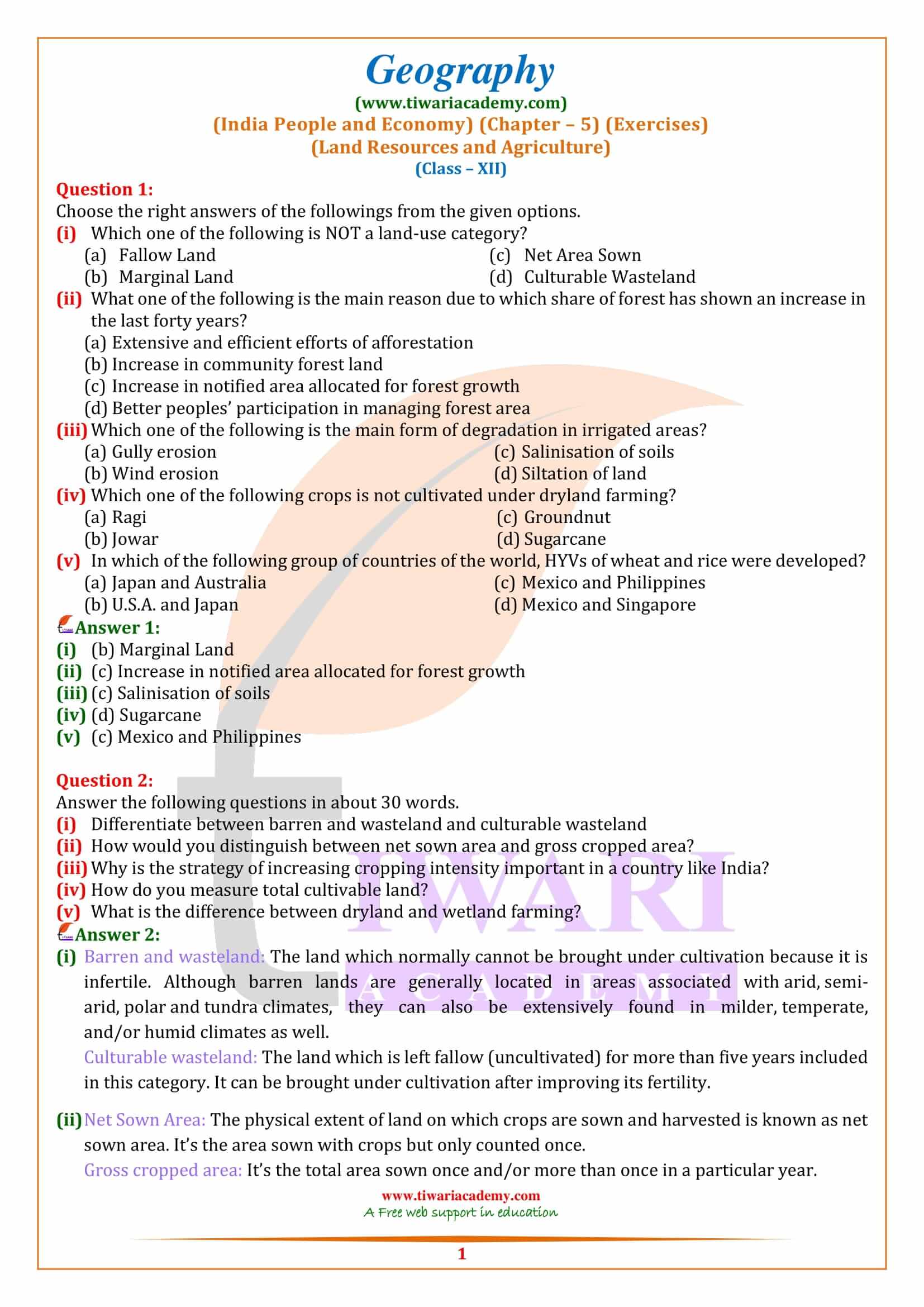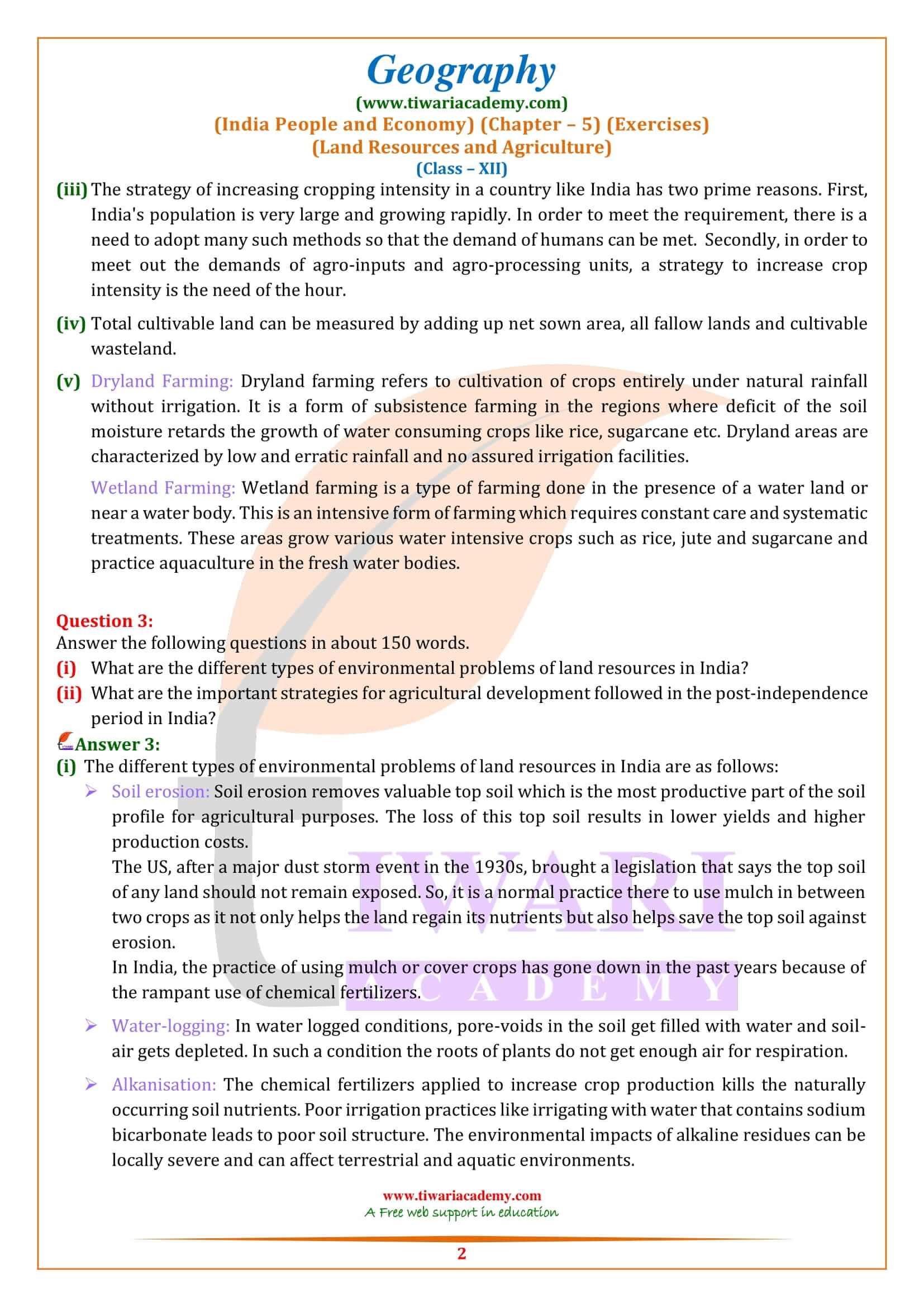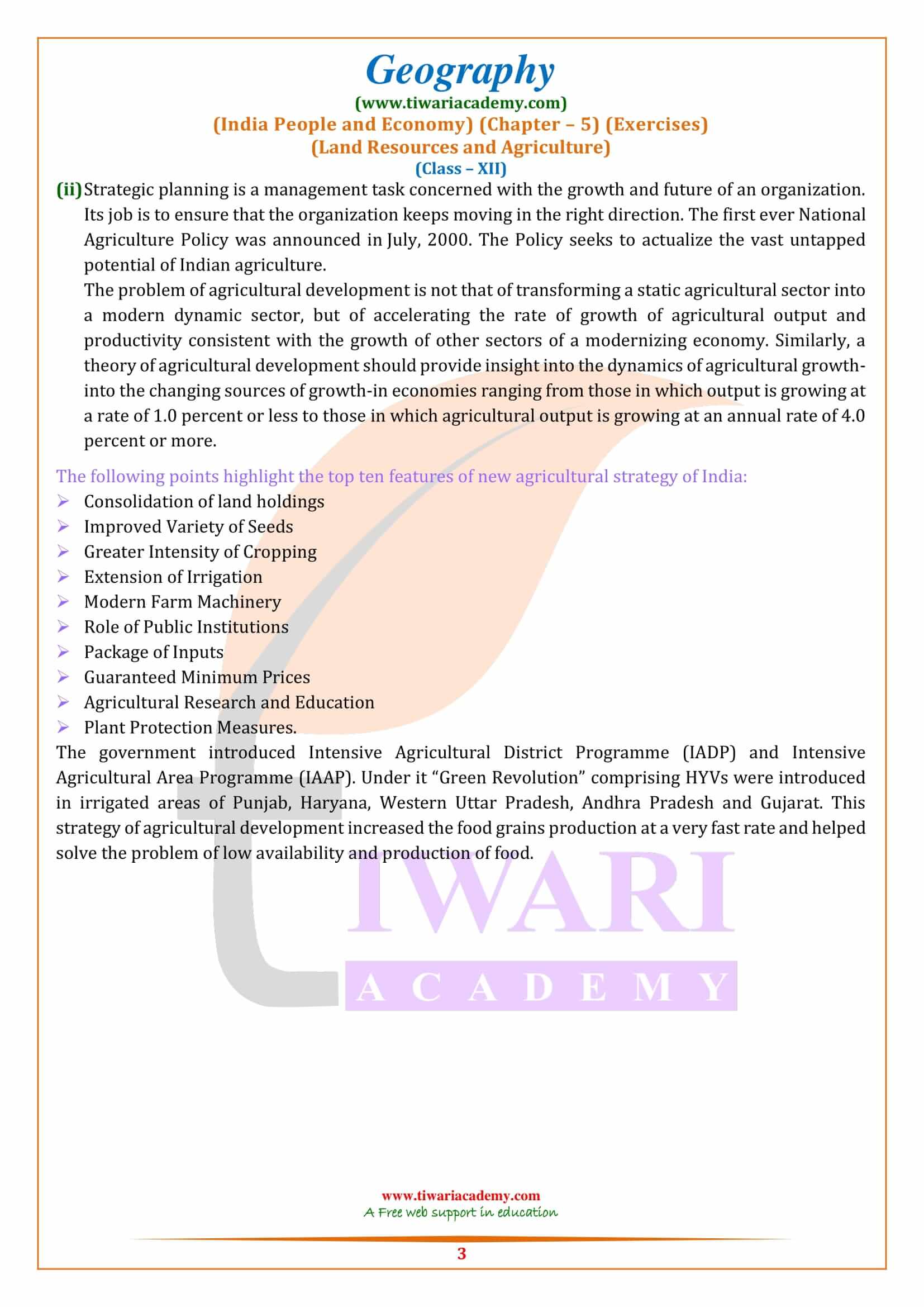NCERT Solutions for Class 12 Geography Chapter 5 Land Resources and Agriculture in Hindi and English Medium updated for CBSE and State board session 2025-26. Class 12 Geography students can practice here India People and Economy Unit III chapter 5 all exercise and extra questions.
NCERT Solutions for Class 12 Geography Chapter 5
Class 12 Geography Chapter 5 Land Resources and Agriculture Question Answers
Differentiate between barren and wasteland and culturable wasteland.
- Barren and wasteland: The land which normally cannot be brought under cultivation because it is infertile. Although barren lands are generally located in areas associated with arid, semi-arid, polar and tundra climates, they can also be extensively found in milder, temperate, and/or humid climates as well.
- Culturable wasteland: The land which is left fallow (uncultivated) for more than five years included in this category. It can be brought under cultivation after improving its fertility.
How would you distinguish between net sown area and gross cropped area?
Net Sown Area: The physical extent of land on which crops are sown and harvested is known as net sown area. It’s the area sown with crops but only counted once.
Gross cropped area: It’s the total area sown once and/or more than once in a particular year.
Class 12 Geography Chapter 5 MCQ
Which one of the following is NOT a land-use category?
Which one of the following is the main form of degradation in irrigated areas?
In which of the following group of countries of the world, HYVs of wheat and rice were developed?
Why is the strategy of increasing cropping intensity important in a country like India?
The strategy of increasing cropping intensity in a country like India has two prime reasons. First, India’s population is very large and growing rapidly. In order to meet the requirement, there is a need to adopt many such methods so that the demand of humans can be met. Secondly, in order to meet out the demands of agro-inputs and agro-processing units, a strategy to increase crop intensity is the need of the hour.
How do you measure total cultivable land?
Total cultivable land can be measured by adding up net sown area, all fallow lands and cultivable wasteland.
What is the difference between dryland and wetland farming?
- Dryland Farming: Dryland farming refers to cultivation of crops entirely under natural rainfall without irrigation. It is a form of subsistence farming in the regions where deficit of the soil moisture retards the growth of water consuming crops like rice, sugarcane etc. Dryland areas are characterized by low and erratic rainfall and no assured irrigation facilities.
- Wetland Farming: Wetland farming is a type of farming done in the presence of a water land or near a water body. This is an intensive form of farming which requires constant care and systematic treatments. These areas grow various water intensive crops such as rice, jute and sugarcane and practice aquaculture in the fresh water bodies.
What are the different types of environmental problems of land resources in India?
The different types of environmental problems of land resources in India are as follows:
Soil erosion: Soil erosion removes valuable top soil which is the most productive part of the soil profile for agricultural purposes. The loss of this top soil results in lower yields and higher production costs.
The US, after a major dust storm event in the 1930s, brought a legislation that says the top soil of any land should not remain exposed.
So, it is a normal practice there to use mulch in between two crops as it not only helps the land regain its nutrients but also helps save the top soil against erosion.
In India, the practice of using mulch or cover crops has gone down in the past years because of the rampant use of chemical fertilizers.
Water-logging: In water logged conditions, pore-voids in the soil get filled with water and soil-air gets depleted. In such a condition the roots of plants do not get enough air for respiration.
Alkanisation: The chemical fertilizers applied to increase crop production kills the naturally occurring soil nutrients. Poor irrigation practices like irrigating with water that contains sodium bicarbonate leads to poor soil structure. The environmental impacts of alkaline residues can be locally severe and can affect terrestrial and aquatic environments.




